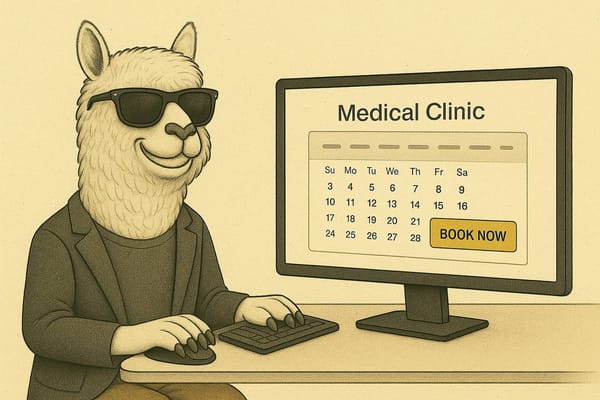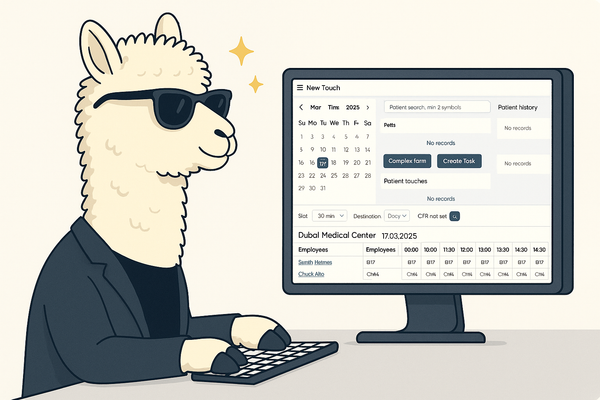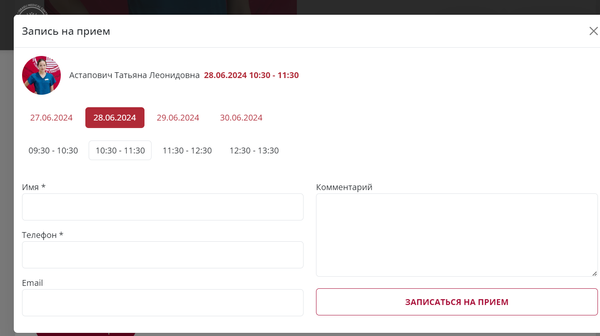WHY CRM SHOULD BE INSIDE EHR

I've seen countless examples of CRM connection to EHR: SalesForce, AMO, Bitrix etc. Most of them are done to compensate the lack of basic client relations functions in EHR - leads count, VoIP and messengers integrations, tasks, which is especially important for profit-oriented medical centers.
But it always leads to working in two windows, higher load for call-center specialists, and bad data. Let's go through some most basic examples of why using a separate CRM is inefficient:
Making an appointment
The patient asks to make an appointment. You have to look up the services in EHR, get the information what doctors can provide it, check their schedule, discuss it with the patient, and then make it. So it looks like this:
1. Open a lead in CRM
<go to EHR>
2. Open EHR
3. Find the patient
4. Check the schedule
5. Make an appointment
<go back to CRM>
6. Fill the appointment data, lead reason etc. to CRM
You have to do one thing twice, you have to switch windows, and you can forget to close the lead or add some information to it. It's not smooth, and not efficient.
Reschedule or cancel the appointment
The path is quite the same:
1. Open the lead in CRM
2. Go to EHR
3. Find his appointment
4. Reschedule or cancel it
5. Go back to CRM
6. Close the lead with lead reason like "rescheduling"
Two windows again, and you are unable to swiftly check when and how the appointment was rescheduled, listen to the call - you have to check the timestamp in EHR, then look for a call in CRM, and so on. Long, inefficient.
Treatment plan
Imagine you are dealing with a chronic disease patient, for example - HIV. Your physicians should make a treatment plan for a year or a half - lab tests, ultrasound, and consultations every 3 months. The patient calls and says - I need to make an ultrasound, I have a prescription from my doctor. You can't just check what exam he needs (from over 100 possible options), even if you have a schedule integrated in your CRM (all the implementations of a schedule in CRM I've seen are outstandingly bad, though).
You need to go to EHR, check the prescriptions, etc.
Where are my lab tests??
The questions all the call centers get really often. One of our clients, a leading genetics lab, has almost 40% of calls like that. And yes, you can't just check the test status and deadline/redline for this test, you go again to the EHR)))
It all takes time, effort, and depression among the call center specialists) And it's not how it should be done.
So, how it should be done?
Let's start with the incoming call interface. We've made countless solutions for call centers in hospitals (up to 5k incoming calls a day), and that's what we've learned to be essential for the operator:
Basics
1. Automated patient identification based on phone number (with an option to switch between different patients with one number in one click)
2. Schedule, where you can make an appointment
3. Patient's appointments history
4. One click access to lab test results, with an option to resend them to patient via email / SMS / WhatsApp
5. Communication with patient history
6. Type of the patient and his/her insurance data
In our case, it looks like this:

Advanced
1. Schedule based on services (only doctors who can provide specific service would be shown, operator is unable to make an appointment to the wrong doctor)
2. Equipment load (system shows, when a specific equipment, necessary for this service, is occupied)
3. Group appointments of any kind (multiple patients VS one doctor, multiple doctors VS one patient)
4. Access to treatment plans, made by various doctors
Commercial (mostly needed for private clinics)
1. Call tracking data (UTM, source, etc.)
2. Lead reason
3. Motivation
In my opinion, that all is essential for swift and comfortable calls handling. Try it, and you'll never go back to stand alone CRMs.




